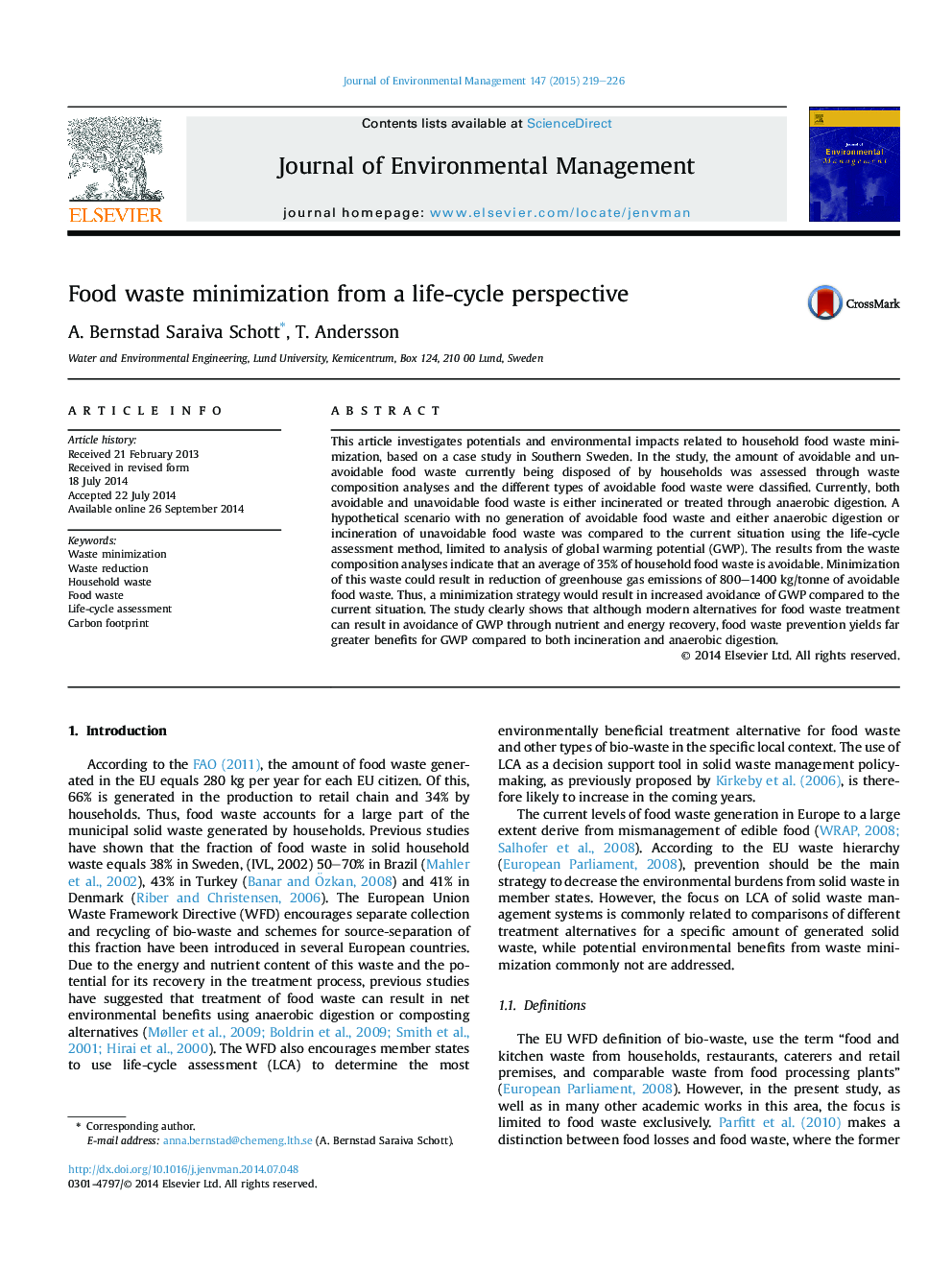| کد مقاله | کد نشریه | سال انتشار | مقاله انگلیسی | نسخه تمام متن |
|---|---|---|---|---|
| 1055663 | 1485265 | 2015 | 8 صفحه PDF | دانلود رایگان |
• Data from detailed waste composition analyses of household food waste are presented.
• A division of avoidable and unavoidable household food waste is proposed.
• On average, 35% of the Swedish household food waste is avoidable.
• The carbon footprint from avoidable food waste reaches 800–1400 kg/ton.
This article investigates potentials and environmental impacts related to household food waste minimization, based on a case study in Southern Sweden. In the study, the amount of avoidable and unavoidable food waste currently being disposed of by households was assessed through waste composition analyses and the different types of avoidable food waste were classified. Currently, both avoidable and unavoidable food waste is either incinerated or treated through anaerobic digestion. A hypothetical scenario with no generation of avoidable food waste and either anaerobic digestion or incineration of unavoidable food waste was compared to the current situation using the life-cycle assessment method, limited to analysis of global warming potential (GWP). The results from the waste composition analyses indicate that an average of 35% of household food waste is avoidable. Minimization of this waste could result in reduction of greenhouse gas emissions of 800–1400 kg/tonne of avoidable food waste. Thus, a minimization strategy would result in increased avoidance of GWP compared to the current situation. The study clearly shows that although modern alternatives for food waste treatment can result in avoidance of GWP through nutrient and energy recovery, food waste prevention yields far greater benefits for GWP compared to both incineration and anaerobic digestion.
Journal: Journal of Environmental Management - Volume 147, 1 January 2015, Pages 219–226
